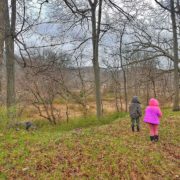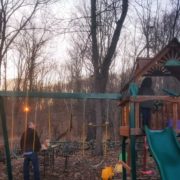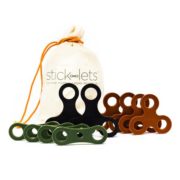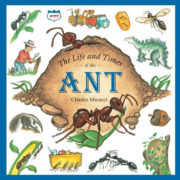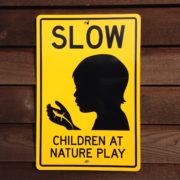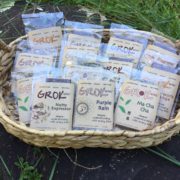This summer, we gave our four year old a multi-tool pocketknife. Not a pretend plastic one, but a real metal one - an actual tool. And it wasn't ours on loan, it was hers to keep, hers to carry and hers to use whenever she wanted. And use it, she did, a lot, in really exciting ways. Having this tool was a big responsibility - what with being sharp and potentially dangerous and all - as much as it was a useful part of her play and exploration. Perhaps that's why pocketknives fall under the category of risky play - and with it, becomes one of the elements of play that we can nowadays expect our children won't have exposure to unless we are pretty intentional about introducing it ourselves. There's something that can possibly go wrong with a child owning a pocketknife, yes, but a lot more that can go right. So let's explore why we should even care about our children owning pocketknives and and how we can introduce these tools safely, even at a young age.
Why a Pocketknife?
Have you watched Gever Tully's TedTalk, 5 Dangerous Things You Should Let Your Kids Do? It's all about the idea that risky play can be powerful. Tully says, "So despite the provocative title, this presentation is really about safety, and about some simple things that we can do to raise our kids to be creative, confident and in control of the environment around them." Number two on this list of five, which he pulls from a larger list of 50, is none other than the pocketknife. Here's what Tully has to say about it:
"Pocketknives are kind of drifting out of our cultural consciousness, which I think is a terrible thing. Your first pocketknife is like the first universal tool that you're given. You know, it's a spatula, it's a pry bar, it's a screwdriver and it's a blade, yeah. And it's a powerful and empowering tool. And in a lot of cultures they give knives -- like, as soon as they're toddlers, they have knives....And it shows that kids can develop an extended sense of self through a tool at a very young age. You lay down a couple of very simple rules -- always cut away from your body, keep the blade sharp, never force it -- and these are things kids can understand and practice with. And yeah, they're going to cut themselves. I have some terrible scars on my legs from where I stabbed myself. But you know, they're young. They heal fast."
If you're focused in on the the last couple of lines, much like I am, we're missing the forest for the trees. The idea isn't that we give kids pocketknives so they can get hurt, but rather because the lessons they come away with from the experience don't really come from things covered in bubble wrap. Hand-in-hand with the risk of getting hurt is the power of being able to use a tool to navigate through and vastly expand the potential of play and exploration. It's chock full of benefits for childhood creativity, innovation, resourcefulness, focus, fine motor skills, confidence, responsibility and life skills. These takeaways are similar to that of learning to use most tools and the benefits can begin as early as you introduce them.
How to Introduce Pocketknives
For us, introducing a pocketknife to our four year old was similar to how we introduced scissors to her over two years earlier. Again, we're not talking about plastic or dull scissors, but real metal, sharp scissors. We talked much about it together in the beginning - how it works and how to use it, carry it and store it safely. Those first few times she used scissors we were side-by-side or watching her quite closely, but that quickly wore off. She demonstrated care and responsibility. Now, and this has been the case for quite sometime, when our four year old reaches for scissors we don't even bat an eye.
Introducing a pocketknife was no different, other than at four years old rather than not quite yet being two we could explain the the tool and her responsibility of it with a much more expanded discussion. Like Tully said above, we had some simple basic guidelines about how to use and care for the blades. As we became more comfortable with her using the tool out of our sight, we talked about how to navigate conversations where other kids might want to use her tool. This introduced a whole other element of responsibility which shifted from no longer just being about herself, but now about other kids as well. We had absolute trust in how she would handle those situations, even without us around. Conversations, practice and trust. They were vital elements to introducing our daughter to these tools.
What Did Play Look Like?
At first our daughter was enthralled with it. We were camping for the summer, so being in the woods and using a pocketknife went together perfectly. There were sticks to whittle and screw into, there were endless natural materials to explore or create with, just in entirely new ways with this tool in hand. For about two weeks, they were inseparable. It went with her everywhere. She even wanted to sleep with it - I kid you not - and if we weren't camping on our air mattress, she would have done it.
Since then, her love affair has mellowed. I dare say the pocketknife has some dust on it. But what isn't rusty is the concept that the tool is available to use or how to use it. The other day when we needed a screwdriver, she said, "I'll go get my pocketknife." She responded the same way when we needed to pry something open and again when we found a stick that looked ripe for whittling. It's not in our everyday - or every moment rotation any longer - but in a way it's job was done. She feels confident in her ability to problem solve simple tasks with it or to use it as a resource in her creative process. Just like she doesn't use scissors everyday, she knows it's there for when she wants it and there for when she needs it.
Now, off to go try our hand at Tully's next dangerous activity - throwing spears!
Want to connect with other like-minded outdoor families? Like Forest School For All on Facebook and join the discussion!




